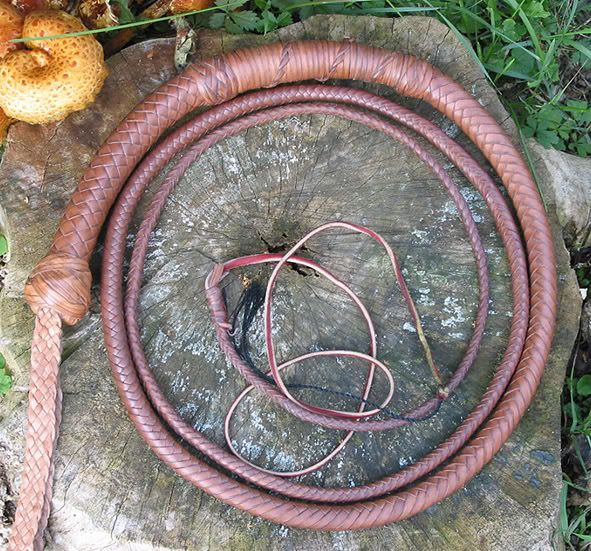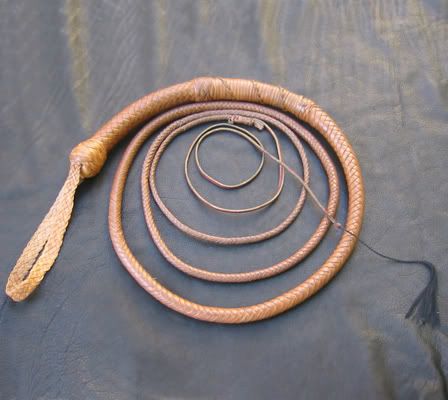With your plaiting for the last 2 ft, how tight the plaiting ends up also depends on how wide your strands are in relation to the core. If you have wide strands and a small core, the plaiting will end up loose no matter how tight you pull. The trick is to experiment with the width of the strands, as well as the number of strands, in relation to the core to figure out how to get the tightness you want.
Also, I find if I drop strands early, the plaiting right after the strand drop ends up tighter, and if I drop strands late, the plaiting before the strand drop is looser.
I didn't expect to see this explanation of the relation between the tightness of the plaiting to the timing of the turndown discussed in this forum and my respect for Mr. Winrich has increased with his observation.
I have seen this turndown question debated recently on the Aust. Whipmaker site and in the magazine and I think only one whipmaker there had an idea of what the real issue really is.
A whipmaker whom I respect once told me that there are only two basic rules in making any good whip-- shape it right and plait it tight-- everything else is additional to these two fundamentals.
The turndowns in the whip are the whipmakers way of keeping to these rules. The strands are cut to a certain width judged by the whipmaker to take the tension he needs to get the tightness he wants but there is a width limit where he knows if he pulls to tightly, they will break.
There is a compromise between the width of the strands and the tightness . As the whip is plaited down over the core, and it must have a core or something or it won't flex right, the strings become too wide for the core and tend to bunch.This is called crowding where each strand rides a little on the previous strand and therefore cannot bight into the core and keep its tightness. This is where the maker needs to get rid of a couple of strands so they go into the core of the whip and the tightness is not compromised.
After some experience the whipmaker can predict when this is about to happen and turn down before so there is no loss of tension.
This is basic whipmaking but many have a deal of trouble getting a grip on it and it opens up more areas for discussion
all the best ...
littlejohn















